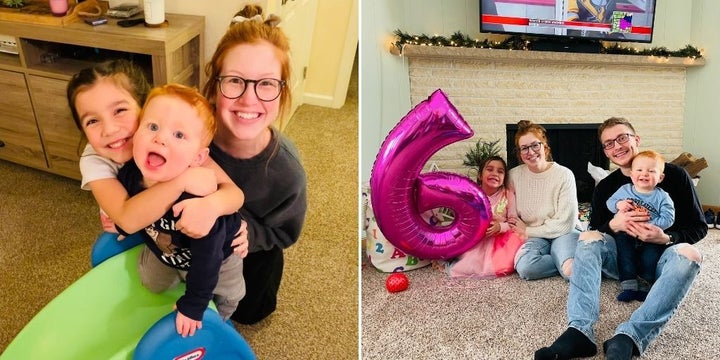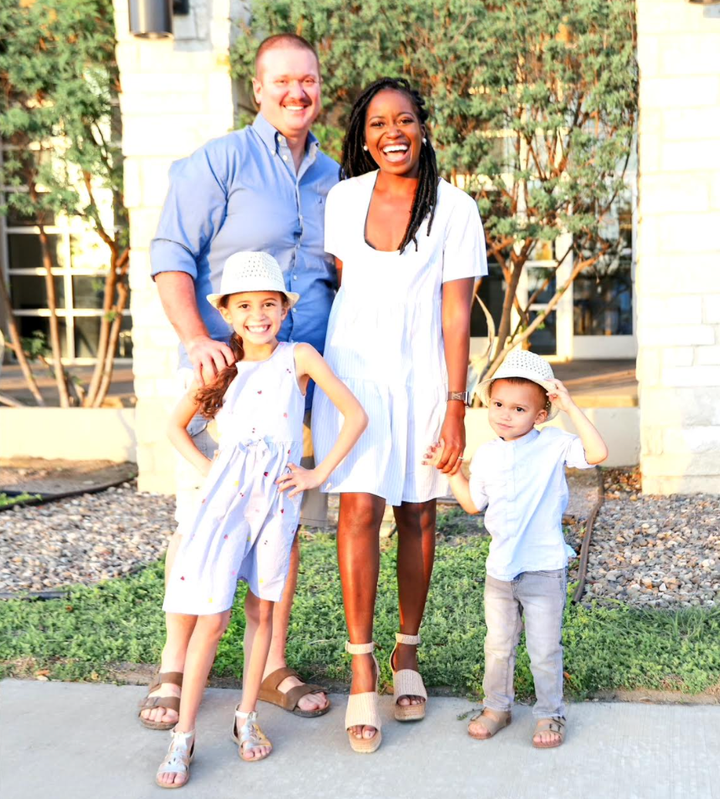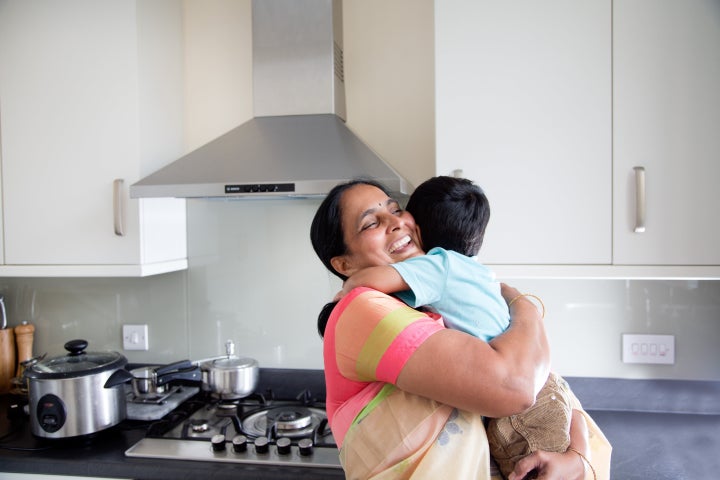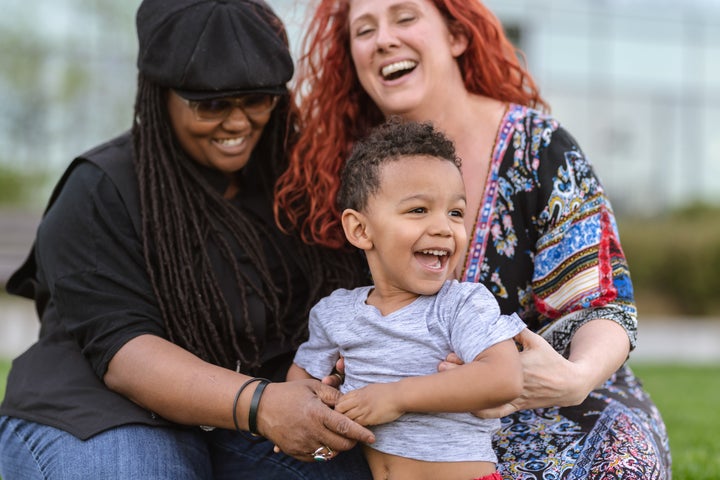At Holly Matuszak’s property in Toledo, Ohio, the Pixar movie “Coco” is in significant rotation.
It is no surprise, given that Matuszak has a 6-yr-old daughter and a 1-yr-old son.
But the animated movie, which celebrates Mexican tradition and history, retains unique significance for the family members: Matuszak’s daughter is combined: Her father is Mexican and her mother’s track record is white European. She enjoys the movie now, but that wasn’t usually the case.
“When she was 3, she cried about looking at ‘Coco’ and not wanting to be Mexican,” Matuszak, a registered nurse case supervisor, explained to HuffPost.
“Her father and I equally explained, in toddler conditions, how unique it is to have various parts that make you total and how awesome it is to have mothers and fathers who grew up in various nations,” she claimed.
Matuszak and her now-ex did and nevertheless do anything probable to immerse their daughter in equally cultures equally, so her “white side is not the only factor she experiences each individual day” ― Spanish classes, outings to the nearby panadería with her father. Nonetheless, as the “Coco” challenge reveals, that can be a battle.
When you’re a combined-race kid who seems to be “different,” you’re sure to dwell on it. Individuals dissimilarities are heightened for Matuszak’s daughter because her brother has a various father and is “very honest-skinned” with vivid crimson hair and blue eyes.
“My daughter has gorgeous tan skin with beautiful, thick brown hair and brown eyes, so she does glance Mexican, but the relaxation of our family members has honest skin ― several of us even have crimson hair,” she claimed.
It hasn’t gone unnoticed by her daughter.
“She not too long ago manufactured the remark that she needed to be ‘bright’ like me,” Matuszak claimed. “I think this stems from hunting various than the relaxation of our side of the family members and becoming an age in which she’s starting to understand this.”
Matuszak’s experiences with aren’t unheard of. In a culture that elevates white European tradition and at least up until eventually not too long ago has relentlessly pressured assimilation, several multiracial small children grapple with their perceived “otherness.”
Occasionally, that plays out in internalized racism. For several multiracial folks developing up, there is a experience of needing to “choose 1 of their sides” over the other, either consciously or unconsciously, claimed Kevin Nadal, a professor of psychology at City College of New York and writer of “Microaggressions and Traumatic Strain.”
“It can take place as a consequence of folks telling them that they are not Asian/Black/Latino sufficient, folks producing entertaining of 1 part of their heritage either immediately or maliciously or even folks who disparage 1 of their identities unknowingly since they don’t know of their other heritage or multiracial identity,” Nadal explained to HuffPost.
As a kid, it’s a total great deal a lot easier to just mix in as monoracial to match in with whoever the the vast majority of their peers are.
That claimed, it’s also incredibly typical for multiracial kids to build a wholesome and potent multiracial identity. For that to take place, Nadal claimed their mothers and fathers and families will need to provide them with “a potent perception of self and instruct them to appreciate all of their heritages.”
Matuszak and her co-mum or dad are performing just that. At age 6, her daughter completely enjoys “Coco” and so much much more that celebrates her Mexican heritage.
“We make positive she gets to hear own stories from her father about his everyday living and experiences,” she claimed. “He speaks Spanish to her, and she enjoys it. She watches ‘Elena of Avalor’ on Television. She is starting to realize that we all have various skin, but that is what tends to make every person so unique and unique.”

How else can you foster a constructive perception of cultural identity if your kids are combined race? Underneath, mothers and fathers like Matuszak and professionals like Nadal share 6 beneficial strategies.
Speak about race early and often.
Chris C. Intelligent, a Texas-dependent lifestyle blogger, has two kids, a seven-yr-old daughter and a son who’s almost 3. Intelligent is Liberian, and her spouse is German. Together, they are hyper-mindful that 1 day their kids could really feel the cultural expectation to “pick a side,” and that problems them.
“That strategy is so disrespectful and perplexing to biracial kids,” Intelligent explained to HuffPost. “Or the strategy that they are ‘too white’ or ‘too Black.’”
To counter what the kids are possible to expertise, Intelligent and her spouse broach a great deal of age-suitable conversations about race and what it signifies to be Black and white in America. (The family members is spiritual, so they often foundation these conversations in that context.)
“Parents are the to start with dose of education and learning that small children will get in their everyday living,” she claimed. “I think it’s critical to educate them on the importance of recognizing equally sides, embracing equally sides and instilling in them that they are fearfully and splendidly manufactured in the graphic of God.”

Get equally sides of your family members associated in educating.
Intelligent and her spouse provide their families into these tradition-wealthy conversations, way too.
“Their grandparents and older a
unts on equally sides do their part in educating them on cultures, traditions and items of the past, because some lived to see items that us millennial mothers and fathers did not,” she claimed. “The values, traditions and the items experienced from my mother developing up in Liberia, I couldn’t reveal in depth to my kids since I wasn’t there. But mother can and does to all of her grandchildren, and they cherish that so much.”
Jacqueline Douge, a pediatrician and writer of the youthful adult guide “Learning to Like All of Me,” suggests getting it a action further: Give your kids the opportunity to “interview” family members associates or discover how to make a unique cultural recipe. (Even better if equally sides of your family members are in a position to participate at at the time.)
“This provides kids a fantastic opportunity to talk to any concerns they may have about their identities,” she claimed.

Surround them with media that functions figures that glance like them.
Luckily for us, you don’t have to do all the instructing. These times, photo books and youthful adult fiction feature figures of a veritable rainbow of ethnicities and backgrounds. Television and films are finding better, way too. Lean on these books early and often, Douge claimed.
“Parents and small children can discover collectively about their child’s heritages by way of books that feature figures that depict their cultures, languages and various experiences,” she claimed.
Give them the language to use when anyone asks, “What are you”?
Stacy-Ann Gooden, a meteorologist in New York City, and her spouse are the mothers and fathers of a ten-yr-old daughter and seven-yr-old son. The kids are of Irish, German, African and Caribbean descent.
Gooden and her spouse talk to them overtly about what it signifies to be multiracial, the conversations about police brutality they see in the news and how to respond to everyday racism. (An come upon in a retail outlet a handful of a long time back again all but compelled the racism dialogue. Gooden and her daughter were being at a craft retail outlet in a predominantly white neighborhood and observed revenue anyone experienced dropped. When Gooden attempted to report the lost cash to a retail outlet supervisor, she was accused of stealing. Her daughter witnessed it all.)
The couple also give their kids the language to talk about their multiracial track record so if any individual at college or in other places asks “What are you?” they know how to respond.
“Unfortunately, there are some who inappropriately talk to that concern,” Gooden claimed. “When that occurs, their responses are usually ‘I am human.’ When some may look at them Black, we instruct them to embrace becoming equally Black and white.”

If they talk about experience the will need to “pick a side” or be witnessed as white, assistance them realize why that is.
When kids detect an clear distinction in themselves ― for occasion, the
the coloration of their skin or the language they discuss ― several will gravitate to the
side that looks much more dominant in their surroundings, just to stay clear of becoming labeled as various.
At a youthful age, they can not understand that themselves, so assistance them realize, claimed Azaria Davis, a scientific social worker who’s Black and Jewish.
“Children are often unable to verbalize what they really feel, so getting the time to validate their thoughts and experiences can provide them with the words to express them,” she claimed.
If you think racism or suffering from a racial microaggression could be 1 of the good reasons they are distancing themselves from 1 side, don’t permit them grapple with these hard thoughts alone.
“First and foremost, it’s critical to be sincere with your youngster,” Davis claimed. “If we fake that racism and white supremacy don’t exist, particularly when
small children provide it up, it can instruct them to second guess what they are
observing and internalizing about how folks interact.”
Immerse them in lived experiences that rejoice their cultures, not just books and films that are significant on constructive illustration.
Matuszak doesn’t just set on a movie that’s large on illustration and call it a day. She and her ex go out of their way to make positive their daughter’s Mexican heritage is a part of her everyday everyday living. It assists, way too, that she’s surrounded by a various local community.
“She has good friends of all backgrounds in her course, which is so critical since diversity is a excellent factor,” Matuszak claimed. “She is starting to see how gorgeous it is for every person to be so various, and she is seriously starting to slide in appreciate with her Mexican side since she sees how unique it tends to make her as an alternative of inferior.”
Currently, the 6-yr-old “loves equally components of her equally,” her mother claimed, and is at last grasping that equally sides are critical.
Case in position: The family members just obtained a new white dog. Her identify? Leche, the Spanish word for “milk.”
